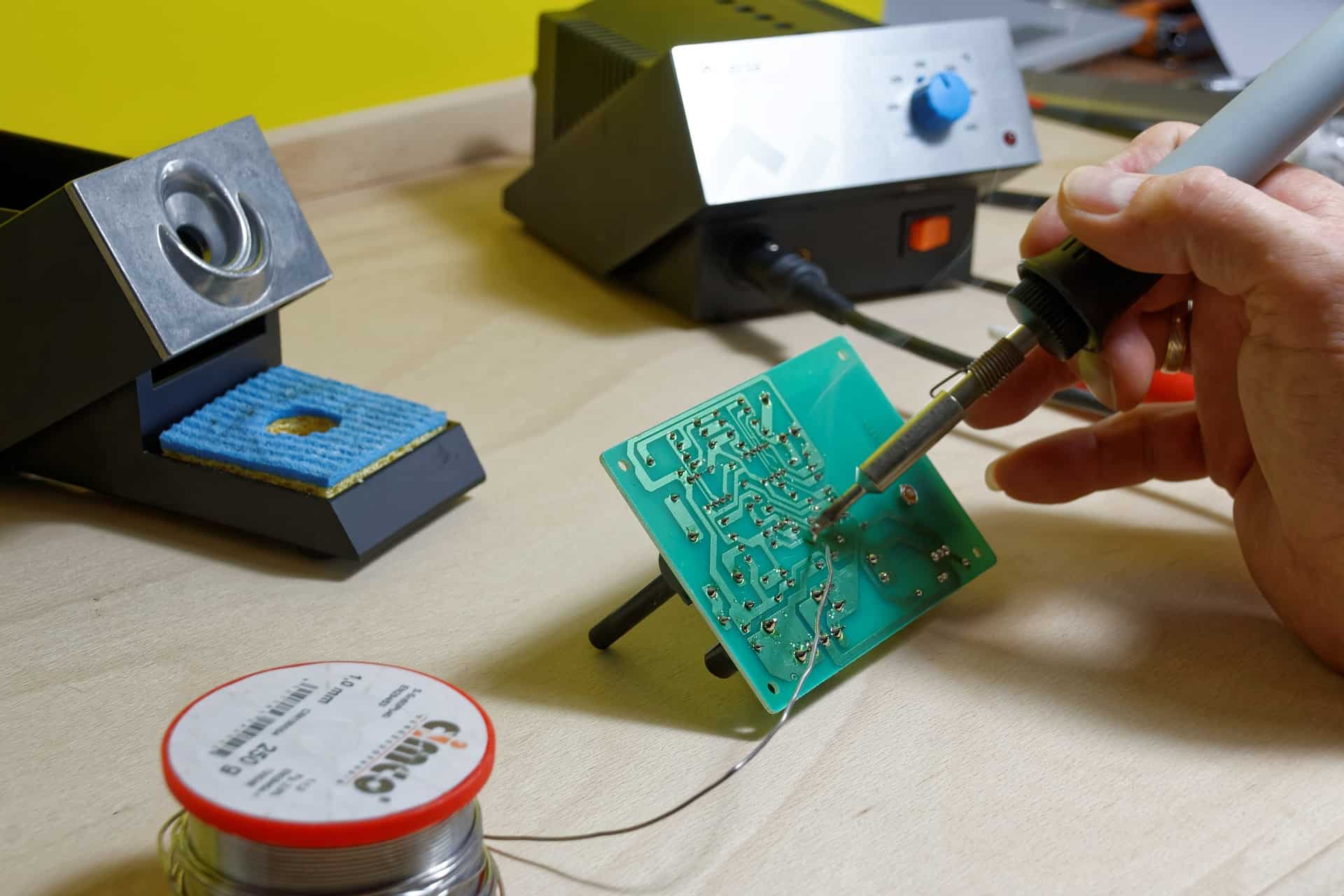As an Amazon Associate I earn from qualifying purchases through links from this site. See the disclosure page for details.

When I told my wife lastly that I need to finish my soldering, she asked me: “what is actually the difference between soldering, brazing and welding”? So because I wanted to give a really good answer I started to recherche and came up with this article right here.
Generally speaking, soldering, brazing and welding are different technical processes to join two metallic workpieces.
Let’s take a look at each technical process in more detail.
What is Soldering?

Soldering
Soldering is a process where two parts are joined together with a filler material that has a lower melting temperature than the parts base materials. Moreover, soldering does not melt the base materials.
For example, soldering is used for plumbing, jewelry or especially for electronic circuit boards.
Soldering – differences to brazing and welding
In contrast to brazing, soldering is done at a lower temperature. According to the American Welding Society (AWS), soldering is usually done up to a temperature of 840°F (= 450°C).
Also, in contrast to welding, soldering does not melt the base material.
Typical materials that are used as a base material for soldering are brass, iron, gold and silver. In the past leaded solder wire was used for soldering. Nowadays leaded solder wire is replaced by lead-free solder wire which is not as harmful to ones health.
Soldering is an essential process to join chips and other conductors in electronic circuit boards.
Usually when repeairing electronics, you are heating solder with the so-called soldering iron. The solder gets liquid and moves around the pin of your electronic component. Once the solder cools down it gets hard again and you get a mechanical and electrical connection between both parts.
back to menu ↑What is brazing?
Brazing is a metal-joining process where you join two metallic items together. This is done with the help of a brazing torch and an additional filler material. Similar to soldering, the filler material has a lower melting point than the workpieces.
With brazing you can join two different metals that would not mix during welding. Typically brazing is used for plumbin, fastening of pipe fittings, making heat exchangers and even to join band saws.
Please take a look at the “brazing made easy” video below, to see how brazing works.
Brazing – differences to welding and soldering
In contrast to welding, the metal of the workpieces does not melt during brazing.
In addition, cleanliness is much more important when brazing. When welding, contaminant films and particles will usually burn out. But, because brazing happens at a much lower temperature level, contaminents are more likely to stay during brazing. Thus you should make sure to clean the surfaces of the metals you want to braze. Otherwise you might get a hard layer that prevents safe bonding.
In contrast to soldering, brazing requires higher temperatures and a very close gap because the brazing process utilizes the capillary effect. When heated above the melting temperature, the filler metal will fill out the gap completely and adhere to the two joined parts. Moreover when brazing you apply heat with a gas flame which is not quite typical for soldering.
back to menu ↑What is welding?

Welding
Welding is another process to join two different parts together. The joining is done with the help of very high heat and can be done in combination with force. Most of the times metals are being welded together, but it is also possible to weld plastics with appropriate equipment.
During welding, the base material melts as well as filler material to join the parts.
The required weld energy comes out of the welding torch when welding with oxy-acetylene or from the welding arc when using electrically powered welding machines.
There are several well-known welding processes like MIG/MAG welding, TIG welding, Stick welding, Laser-welding and Oxyacetylene welding.
As welding works with high energy, you will need good welding clothing to protect yourself from weld sparks and spatter.
Welding – differences to soldering and brazing
In contrast to soldering and brazing, the base material melts and mixes with the weld partner as well as the weld wire during the welding process.
In contrast to soldering and brazing, welding gives joints with a much higher strength. High strength weld seams are required for structural and safety-relevant components. For example a car frame is being welded and not soldered.
back to menu ↑Alternatives
As an alternative to soldering, brazing and welding you could try to mechanically bolt the joint or use adhesives. Some people use epoxy glue (metallic weld) like for example JB weld.
Other possibilities to join metals together is to place rivets on them, which is often done at the hull of airplanes.
Image Credits: Pixabay, Pixabay/Skeeze








